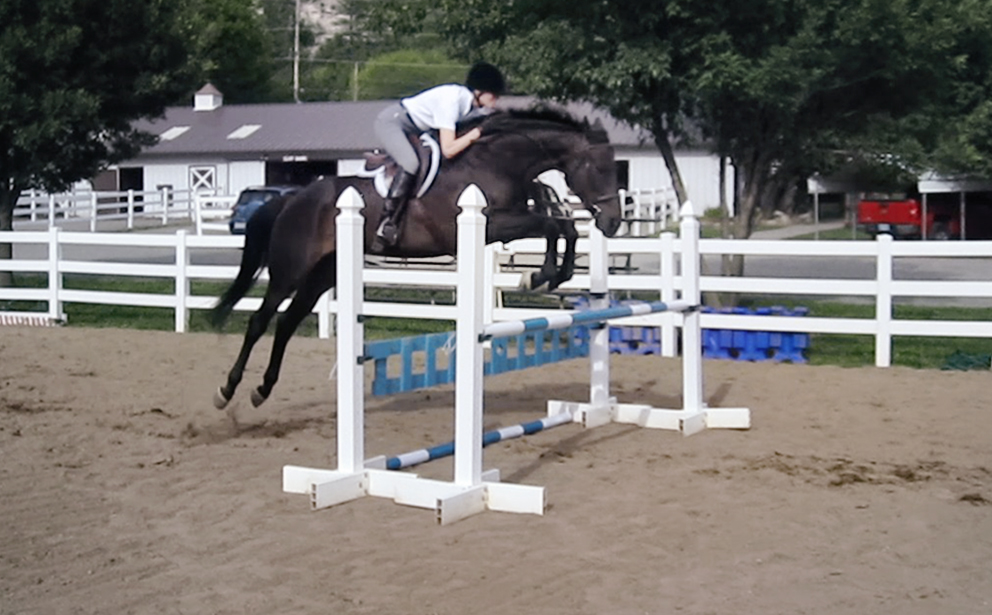Janet Jones

Hi, there. I grew up in Arizona where kids rode ponies to each other’s houses and hopped bushes in the desert for fun. When I was 7 or 8, my dad took me to a horse show where he explained why the riders were bouncing up and down. “It’s called posting,” he said, and I was instantly obsessed.
For years, I lived at a 60-horse barn, riding under the supervision of two trainers. Most of our mounts were young or difficult—a diverse influx of babies who didn’t know the human world yet and bad actors no one else wanted to handle. I schooled seven or eight of them a day and taught beginning riders. I also showed some of the more advanced horses, eventually qualifying for the US Olympic jumper program.
After a head injury, I began reading about brains, eventually earning a Ph.D. from UCLA in cognitive science. Don’t worry: “cognitive science” is just a fancy phrase for figuring out what happens inside normal noggins on a regular day. My research on human brain function won UCLA’s Gengerelli Distinguished Dissertation Award in 1989. The following year, it was a national finalist for the New York Academy of Science’s award for the best psychology dissertation in the United States.
Since then, I’ve written for a bunch of scientific journals and some popular horse magazines. My first book Understanding Psychological Science, and its companion Instructor's Manual, were published in 1995. Three years later, The Psychotherapist’s Guide to Human Memory came out. Horse Brain, Human Brain is my fourth book.
I taught the neuroscience of human perception, language, memory, and thought to college students for 23 years. There’s nothing quite like describing the innards of a neuron to bleary-eyed 18-year-olds at 8:00 in the morning. I had to learn how to explain brains in simple interesting ways that would at least keep these kids awake. That plain language helps me apply brain function to horsemanship today.
Horses and brains fully converged in 2014, when EQUUS magazine began to publish my writings on brain-based horsemanship. I had left my position as a tenured full professor and opened a training business for horse-and-human teams. It included beginning to advanced horsemanship in both Western and English disciplines. The business allowed me to study on horseback how to best apply detailed principles of brain function to the mutual interaction between horses and riders.
I’m an active member of the Society for Neuroscience, Phi Beta Kappa, the Association for Psychological Science, the United States Hunter/Jumper Association, and the United States Equestrian Federation.

